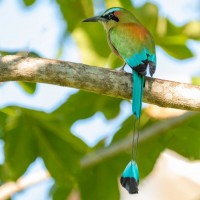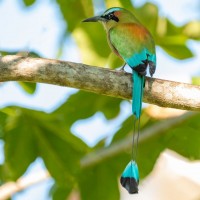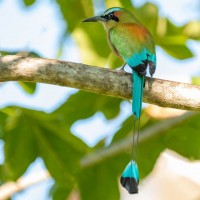Discover Honduras, a fascinating Central American country of abundant lakes, lush mountains, and pristine beaches. More than 800 species of birds occur here — including the endemic Honduran Emerald and the stunning Resplendent Quetzal. The country also hosts mammals such as jaguars, monkeys, tapirs, and peccaries. Honduras is perhaps best known for the ruins of Copan, the “Paris of the Mayan world.”
A Honduran birding tour is a natural next step in neotropical birding. Sitting near the middle in terms of species count, it's a great trip for those who have done the introductory countries like Belize and Trinidad.
Naturalist Journeys is pleased to offer Honduras birding tours and Honduras nature tours, as well as other Central American birding tours. Feel free to contact our travel planners with questions.
Guided Group Tours
Group travel is rewarding and fun! With more eyes you see more species. Travel Planners of Naturalist Journeys have been creating memorable journeys for 40+ years. We offer you small-group birding and nature tours, limited to just 8-13 persons led by expert guides. Learn and explore with like-minded people, enjoy local food and culture, and immerse yourself in birding and nature.
-
 Honduras’ Emerald Valley A Short & Sweet Birding BlitzFebruary 10 - 16, 2026
Honduras’ Emerald Valley A Short & Sweet Birding BlitzFebruary 10 - 16, 2026 -
 Honduras’ Emerald Valley A Short & Sweet Birding BlitzMay 1 - 7, 2026
Honduras’ Emerald Valley A Short & Sweet Birding BlitzMay 1 - 7, 2026 -
 Honduras’ Emerald Valley A Short & Sweet Birding BlitzDecember 1 - 7, 2026
Honduras’ Emerald Valley A Short & Sweet Birding BlitzDecember 1 - 7, 2026
Conservation Corner
We value conservation – it is at the heart of our work. All Naturalist Journeys’ tours support local conservation projects. Browse the links below to learn more about positive local work to save and conserve the wildlife and landscapes we visit.
Honduran Conservation Coalition
Through the Honduran Conservation Coalition, a network of scientists initiates, promotes, and implements a range of citizen science, community-based conservation, and environmentally sustainable development projects in Honduras and the region.
Saving the Honduran Emerald
The Honduran Emerald is the only endemic bird in Honduras. Primarily an inhabitant of interior, arid, and open-canopy deciduous thorn-forest, this species is listed as endangered on the IUCN Red List of Threatened Species, primarily due to habitat destruction and fragmentation for plantation agriculture and cattle pastures. Protected sanctuaries and cattle management are key to its continued survival.

